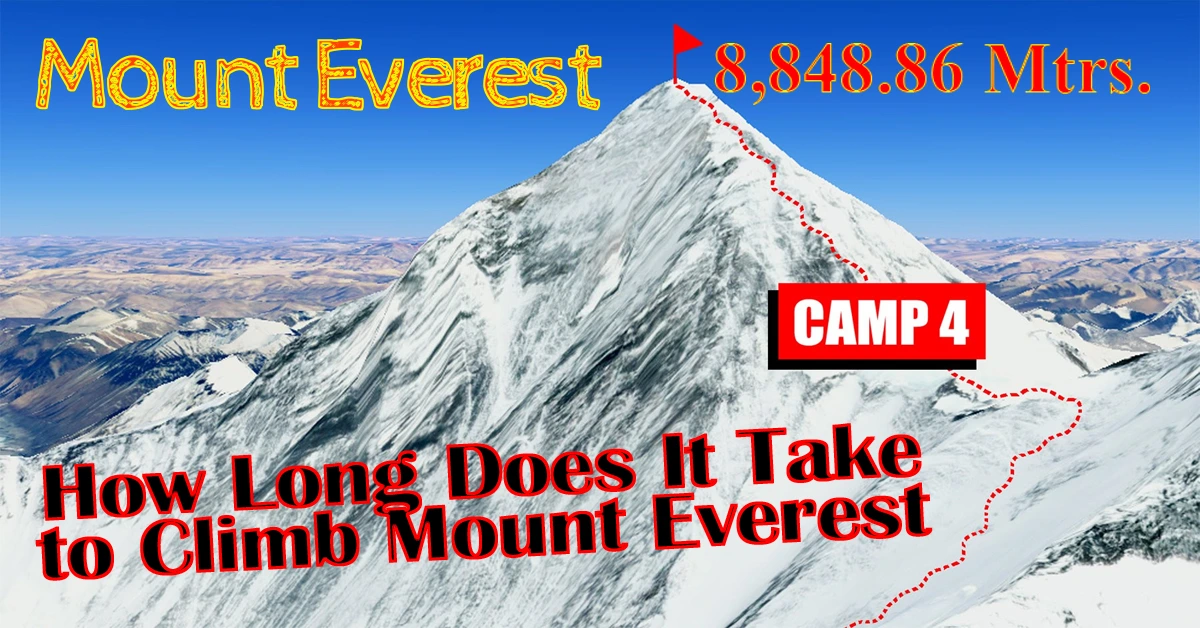Introduction
Mount Everest, the tallest mountain in the world, stands at a staggering 8,848.86 meters (29,031.7 feet) above sea level. Every year, hundreds of climbers attempt to reach the summit, but how long does it actually take to climb Mount Everest? In this comprehensive guide, we will explore the timeline, factors affecting the duration, preparation time and frequently asked questions.
Understanding the Climb Timeline
Climbing Mount Everest is not a single-day or even a single-week endeavor. The journey typically takes around 6 to 10 weeks from start to finish, including acclimatization and weather delays. Here is a general breakdown of the timeline:
1. Pre-Expedition Preparation (Months to Years in Advance)
Before even setting foot on Everest, climbers spend months or even years preparing for the challenge. This includes:
- Physical Training: Strength, endurance, and cardiovascular conditioning.
- Climbing Experience: Prior experience on high-altitude mountains like Denali or Aconcagua.
- Permit and Logistics: Securing climbing permits and organizing the expedition.
- Gear Acquisition: Buying and testing specialized mountaineering equipment.
2. Arriving in Nepal and Trek to Base Camp (10-14 Days)
Most climbers start their journey in Kathmandu, Nepal, where they obtain permits and finalize logistics. They then take a flight to Lukla (2,860m) and trek to Everest Base Camp (5,364m) over a period of 10 to 14 days to acclimatize gradually.
3. Acclimatization and Rotations (3-5 Weeks)
Due to the extreme altitude, the body needs time to adjust. Climbers follow an acclimatization schedule:
- Rotation Climbs: Climbing to higher camps and returning to Base Camp to allow the body to adapt.
- Oxygen Training: Learning to use supplemental oxygen effectively.
- Weather Monitoring: Waiting for favorable summit conditions.
The typical route includes:
- Base Camp (5,364m) – The starting point.
- Camp 1 (6,065m) – First major camp after crossing the treacherous Khumbu Icefall.
- Camp 2 (6,400m) – A relatively safer resting spot.
- Camp 3 (7,162m) – Climbers start using supplemental oxygen here.
- Camp 4 (7,950m) – The final camp before the summit push.
4. Summit Push and Descent (4-7 Days)
The final ascent to the summit depends on weather conditions and climbers’ acclimatization. The last leg includes:
- A climb from Camp 4 to the summit (8,848.86m), which takes 8-12 hours.
- A quick descent back to Camp 4 and lower camps to avoid high-altitude sickness.
5. Return Journey (4-7 Days)
Once the summit is reached, climbers descend to Base Camp and return to Kathmandu.

Factors That Affect Climbing Time
Several factors influence how long the Everest climb takes:
- Weather Conditions: Poor weather can delay summit attempts by days or even weeks.
- Acclimatization Ability: Some climbers adapt quickly, while others need more time.
- Experience Level: Experienced mountaineers may complete rotations faster.
- Traffic Jams: Congestion on the mountain can slow climbers down.
- Physical Fitness: A fitter climber can move efficiently.
- Route Choice: The South Col route from Nepal is generally faster than the North Ridge route from Tibet.
10 Best FAQs About Climbing Mount Everest
1. How long does it take to climb Everest from Base Camp?
It typically takes 6-9 weeks from Base Camp, including acclimatization and summit attempts.
2. Can you climb Everest in one day?
No, even the fastest climbers take days to ascend. However, the final push from Camp 4 to the summit can be done in 10-12 hours.
3. What is the best time to climb Mount Everest?
The best climbing windows are April-May (Pre-monsoon season) and September-November (Post-monsoon season).
4. Do you need oxygen to climb Mount Everest?
Yes, most climbers use supplemental oxygen above 7,000m due to the thin air.
5. How much does it cost to climb Mount Everest?
Climbing Everest costs between $30,000 to $100,000, depending on expedition type and support.
6. What is the hardest part of climbing Everest?
The Khumbu Icefall and the final summit push from Camp 4 are considered the most challenging.
7. How many people have died on Mount Everest?
Over 300 climbers have lost their lives on Everest, mainly due to falls, avalanches, and altitude sickness.
8. Can beginners climb Mount Everest?
No, Everest requires extensive high-altitude mountaineering experience before attempting.
9. What is the fastest ascent of Mount Everest?
The record for the fastest ascent is 8 hours and 10 minutes, set by Lakpa Gelu Sherpa in 2003.
10. What is the success rate for climbing Mount Everest?
The success rate varies but is generally around 60-70% for well-prepared climbers.
Conclusion
Climbing Mount Everest is a monumental challenge that requires extensive preparation, acclimatization, and patience. The journey typically takes 6-10 weeks, depending on weather, fitness and experience. With careful planning and the right mindset, reaching the top of the world is an achievable dream for dedicated climbers.
Stay tuned to our website for regular updates about the all types information. If you have any additional questions, feel free to leave a comment below. Otherwise you can e-Mail us our official Mail contactus@twki.online.
